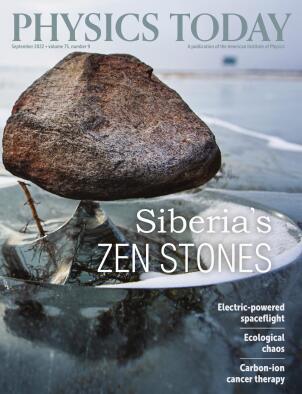Living chiral crystals
DOI: 10.1063/PT.3.5089
Conventional crystals typically form when the attraction between constituent atoms or molecules overcomes any thermal agitation in the system. Active crystals, in contrast, can form when mobile particles self-organize into a regular ordered structure. Such behavior has been observed previously in colloidal and bacterial systems. The composite photo here shows starfish embryos that have spontaneously formed a two-dimensional living crystal. Each of the hundreds of floating embryos spins clockwise. Those individual motions pull water toward each embryo and downward and collectively produce a chiral rotation of the few-millimeter-sized crystal. Light yellow indicates the embryos’ initial positions; dark blue, their ending positions.

Tzer Han Tan (now with the Max Planck Institute of Molecular Cell Biology and Genetics), Alexander Mietke, Nikta Fakhri, and their MIT colleagues found that a starfish crystal can persist for tens of hours. But unlike previously studied active crystals, the starfish assembly’s motion is a result of the embryos’ development. In the first 40 or so hours of growth, each embryo has an asymmetric elongated shape whose major axis is oriented perpendicular to the fluid surface. As they spin clockwise, groups of them spontaneously organize into 2D hexagonal clusters. What remains a mystery, however, is the evolutionary advantage of the spontaneous active crystal. (T. H. Tan et al., Nature 607, 287, 2022, doi:10.1038/s41586-022-04889-6
More about the Authors
Alex Lopatka. alopatka@aip.org
